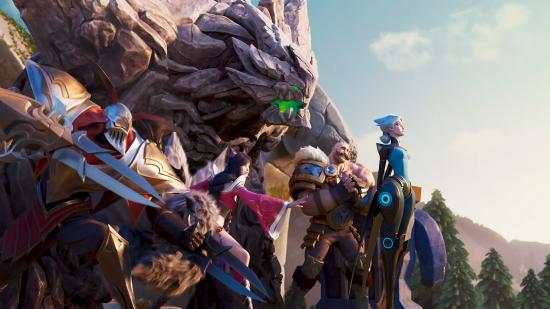The fervour for mobile gaming has grown exponentially over the past several years. Right now, according to a report published this year by processing technology company ARM, mobile gaming accounts for over 50% of revenue across the entire gaming market. However, despite this, there remains a stigma towards competitive mobile gaming in the west, where mobile esports participation is still relatively low compared to parts of Asia.
With that said, western gamers are starting to develop a taste for what the ARM report calls ‘high-fidelity’ games – which “feature advanced graphics and/or complex mechanics and gameplay” – such as PUBG Mobile, Call of Duty: Mobile, and indeed League of Legends: Wild Rift.
In a recent interview with The Loadout, we asked Wild Rift’s head of esports for EMEA, Hans Christian Duerr, what Riot Games is doing to help further nudge competitive gamers in the west towards its mobile experience. Duerr firmly believes that mobile esports actually has a lot more in common with PC and console than people think.
“Just like PC or console esports, mobile gaming requires strong tactical thinking, split-second decision making, team play, perseverance, and good communication skills to succeed,” Duerr says. “The only difference is that you’re using another input device to execute.”
When presented like that, it’s clear that Wild Rift shares many commonalities with big brother League of Legends in how players can express their skills. To Duerr, being able to showcase Wild Rift’s skill ceiling through circuits such as this past weekend’s Origin Series is crucial to quashing that stigma long-term. “I am confident that more and more potential viewers and players will appreciate the depth and complexity of playing on the highest level,” he says.
Additionally, Duerr believes the differences between Wild Rift esports and its big screen counterparts can also provide creative opportunities to showcase its potential, particularly from a production standpoint. “The fact that you’re playing on your phone, and match times are much shorter than with PC MOBAs, allows for way more creativity when it comes to producing a show around mobile esports,” he says. “And I am pretty excited to explore this possibility in the future.”
Indeed, it seems like Riot is looking to pull out all the stops to persuade western esports players and fans that the mobile experience should not be slept on. Although many consider Wild Rift a more casual way to enjoy the League of Legends experience, its competitive scene is already beginning to flourish.
The Wild Rift Origin Series finals saw the EMEA region’s top teams duke it out in the esports’ first ever LAN event. After three days of intense games, Team Queso took home the lion’s share of its $180,000 prize pool, while locking in a spot for the Horizon Cup – the crowning event of the Wild Rift esports calendar – in November.
But, despite Sunday’s grand final pulling a regional record-breaking 5,500 average concurrent viewership on Twitch, it’s clear Riot still has work to do on selling mobile esports in the west.
